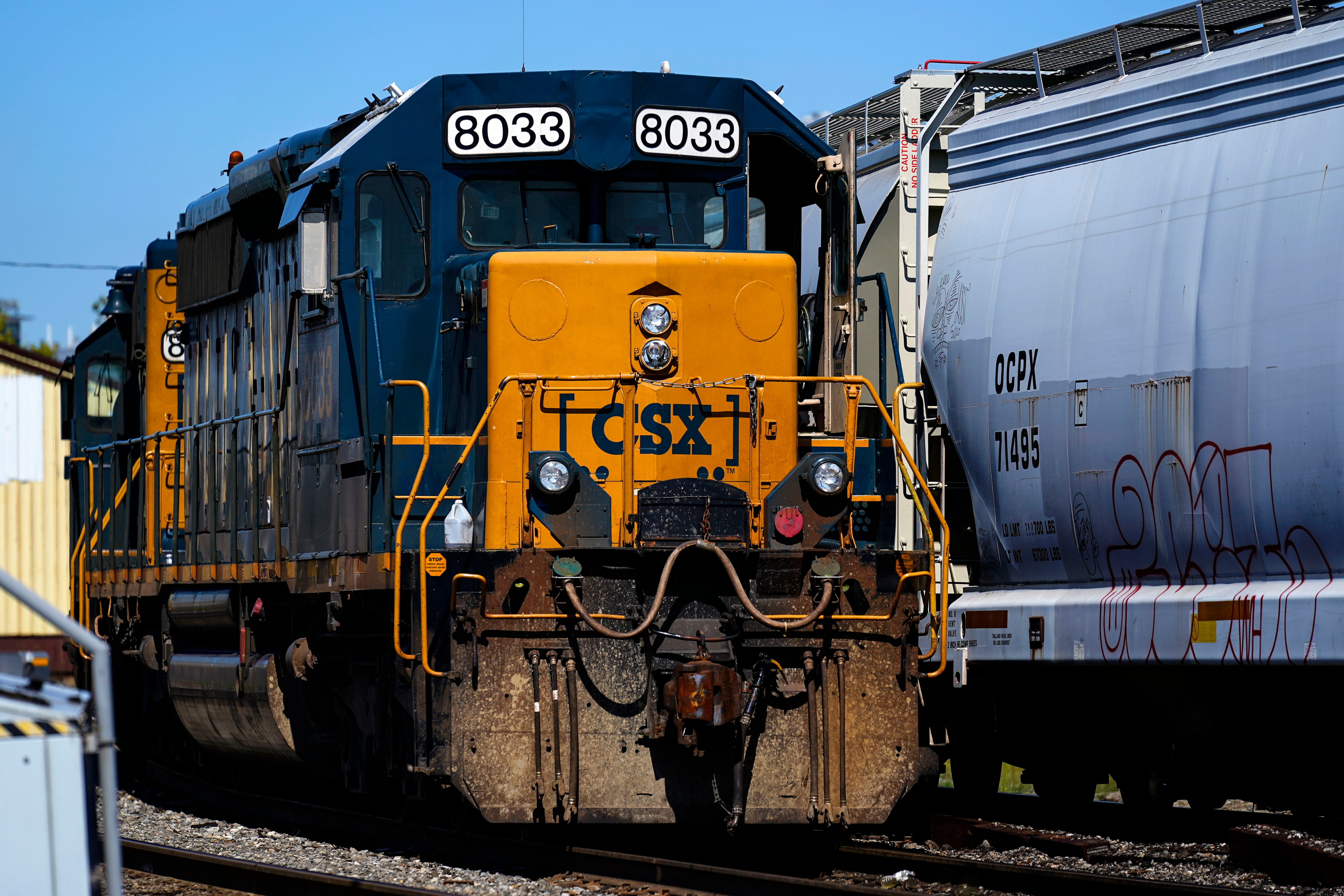Freight railroads must keep 2-person crews, according to new federal rule
Major freight railroads will have to maintain two-person crews in most circumstances under a new federal rule

Your support helps us to tell the story
From reproductive rights to climate change to Big Tech, The Independent is on the ground when the story is developing. Whether it's investigating the financials of Elon Musk's pro-Trump PAC or producing our latest documentary, 'The A Word', which shines a light on the American women fighting for reproductive rights, we know how important it is to parse out the facts from the messaging.
At such a critical moment in US history, we need reporters on the ground. Your donation allows us to keep sending journalists to speak to both sides of the story.
The Independent is trusted by Americans across the entire political spectrum. And unlike many other quality news outlets, we choose not to lock Americans out of our reporting and analysis with paywalls. We believe quality journalism should be available to everyone, paid for by those who can afford it.
Your support makes all the difference.Major freight railroads will have to maintain two-person crews on most routes under a new federal rule that was finalized Tuesday.
The Transportation Department's Federal Railroad Administration released the details of the rule Tuesday morning, after working on it for the past two years.
There has been intense focus on railroad safety since the fiery February 2023 derailment in eastern Ohio, but few significant changes have been made apart from steps the railroads pledged to take themselves and the agreements they made to provide paid sick time to nearly all workers. Such changes include adding hundreds more trackside detectors and tweaking how they respond to alerts from them. A railroad safety bill proposed in response to the derailment has stalled in Congress.
Rail unions have long opposed one-person crews because of a combination of safety and job concerns. Labor agreements requiring two-person crews have been in place for roughly 30 years at major railroads, although many short-line railroads already operate with one-person crews without problems.
“As trains — many carrying hazardous material — have grown longer, crews should not be getting smaller,” said Eddie Hall, the president of the Brotherhood of Locomotive Engineers and Trainmen union. He praised the FRA for taking the step Biden promised, which marks a milestone in labor’s long fight to preserve two-person crews. Hall said keeping two people in the cab of a locomotive is crucial now that railroads are relying on longer and longer trains that routinely stretch miles long.
Railroads have sought the discretion to operate trains with only one person and move conductors to ground-based jobs in places where automatic braking systems have been installed. It has been a key issue in contract talks in the industry for years, though the railroads abandoned the proposal just as the 2022 negotiations approached the brink of a strike because of workers' quality-of-life concerns.
The railroads argue that the size of train crews should be determined by contract talks, not regulators or lawmakers, because they maintain there isn't enough data to show that two-person crews are safer. The norm on major railroads is two-person crews, so current safety statistics reflect that reality.
Union Pacific tried last year to test out how quickly a conductor in a truck can respond to problems on a train compared to the conductor aboard the locomotive, although the railroad never got that pilot program up and running. That plan would have maintained two people at the controls of its trains during the test.
The East Palestine, Ohio, derailment put a national spotlight on rail safety because of the disastrous consequences of the hazardous chemicals that spilled and caught fire in that crash that forced thousands of people to evacuate their homes and left them with lingering health concerns.
But investigators haven't suggested the crew on that train did anything wrong. It actually included three people because there was a trainee aboard. Instead, the National Transportation Safety Board has said the derailment was likely caused by an overheating wheel bearing on one of the railcars that wasn't caught in time by trackside sensors.
At least 11 states have already approved rules requiring two-person crews because officials worry that losing a crew member would make railroads riskier and hurt the response to any rail disaster because a conductor wouldn’t be available to help right away. States frustrated with the federal government’s reluctance to pass new regulations on railroads have also tried to pass restrictions on train length and blocked crossings.
The industry often challenges the state rules in court, though with this new federal rule it’s not clear whether the railroads will resort to that tactic. The railroads generally argue in their state lawsuits that the federal government should be the only one to regulate the industry to ensure there’s a uniform set of rules, and they wouldn’t be able to make that argument in a challenge to the federal rule.
___
Associated Press writer Ashraf Khalil in Washington contributed to this report.